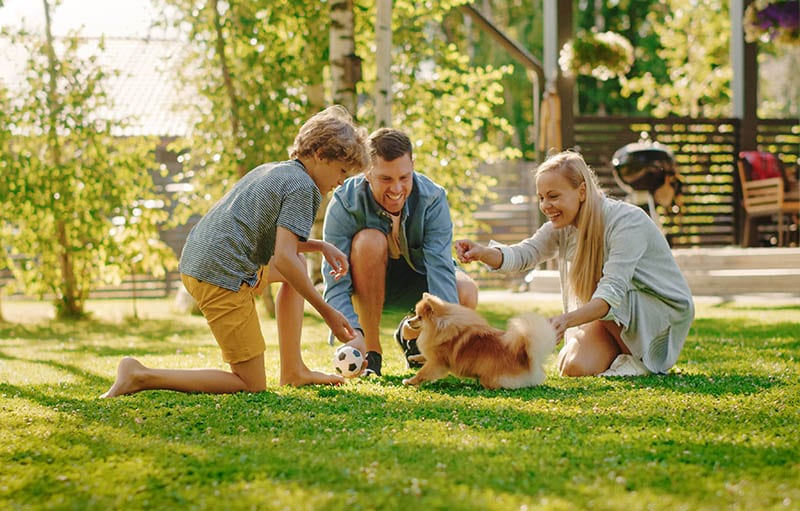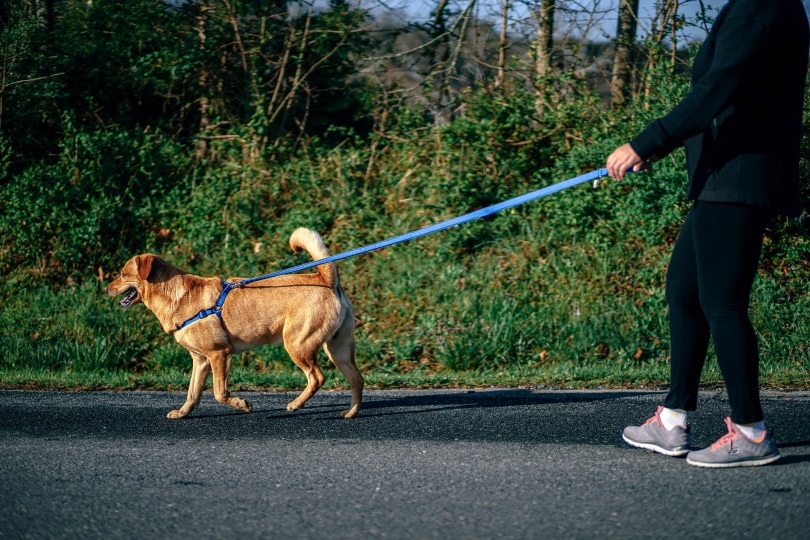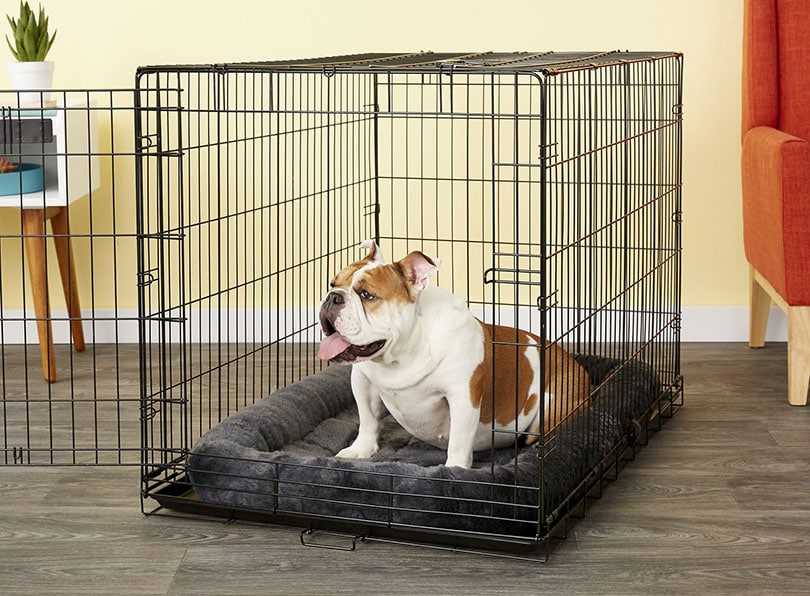Click to Skip Ahead
The larger the dog, the more space they need, both indoors and out. If you’re thinking about bringing a new pup into your household, this is a serious consideration that you’ll need to make. If you live in a tiny condo, you don’t want to invest in an Irish Wolfhound!
A big part of determining the right amount of space for a dog involves measuring your dog. Whether you’re looking at your yard or a crate, we cover how to measure your dog and what you need to think about regarding their space requirements.
Hopefully, we’ll help answer some of your questions, and you’ll be able to make the right choices for your new companion’s comfort.
Measuring Your Dog
Before discussing how much space a dog needs, you need to measure your dog.
- Start by measuring your dog from the tip of the nose to the base of the tail. Do this in a straight line and not by following the contours of your pup’s body. This can be done with your dog lying on their side or standing in a normal position. For this example, we have a dog that is 30 inches from his nose to the base of his tail.
- Add 6 inches to this number. Now we have 36 inches.
- You need to square this number, so 36 x 36, which will give you the minimum floor space. This gives us 1,296 square inches.
- To get the square footage, you need to divide the number from step 3 by 144. So, 1,296 ÷ 144 = 9. This now gives us 9 square feet.
Therefore, a dog that is 30 inches long needs a minimum of 9 square feet of space. Also, if you’re planning on placing your dog in an enclosed place, like a crate, there should be a minimum of 6 inches of space over their head.
The rule is that the dog should be able to sit, stand up, lie down, and turn around comfortably in a crate.
Backyard Space

Much of how much outdoor space your dog will need depends not only on the size of the dog but also on the breed. Some large breeds don’t need much space because they are low-energy.
For example, Welsh Corgis are high energy and need plenty of space to run around in, whereas Greyhounds usually only need minimal space.
Your best bet is to research the breed that you’re most interested in and check the energy requirements. High-energy dogs come in all shapes and sizes, and you’ll need to judge if your outdoor space is good enough. In a pinch, make sure your local park is nearby for regular exercise.
Setting Up a Personal Space for Your Dog
It’s essential that you have a space set up for your dog that’s safe and quiet. For some dogs, it might be a section of your couch or a corner in your living room.
It should be in a low-traffic and quiet area, without any drafts. You won’t want hot or cold air blowing on your pup, so the temperature must be consistent, which also includes staying away from direct sunlight.
If your dog prefers the crate, you can leave the door open and invest in a crate cover, which will make it cozier and a great place for your dog to escape to.
Once you or your dog have picked a spot, you should add your dog’s favorite things to it, like blankets or a dog bed and toys. You can also place food and water bowls close to this area if it’s feasible.
Try not to mess around with their space unless it’s absolutely necessary, such as if it needs cleaning. Make sure everyone in your family gives the dog space, particularly when your dog is relaxing in their area. The whole point of providing your pup with a safe space is to allow them to have quiet and uninterrupted time there.
Outdoor Exercise

Getting your dog outside for exercise is a vital part of dog ownership. Even dogs that don’t need or want much exercise still need to get outside for the fresh air and to stretch their legs.
Without proper exercise and social and mental stimulation, behavioral and health problems can crop up, such as:
- Depression
- Irritability and aggression
- Boredom and restlessness
- Obesity and lethargy
- Destructive behavior such as chewing and digging
- Overexcitability and overly rough play
- Attempts at escape
- Frequent whining and barking
If you live in a small space and are away for most of the day, you’ll need to take your dog out for long walks and exercise when you’re home.
Conclusion
Space is important for dogs, particularly if you’re looking at dog crates. However the size of your yard or apartment is not as important as how often you take your dog out for daily exercise and walks. Just be careful about the kind of breed that you decide on. If you yourself aren’t an energetic person, you’re probably better off with a low-energy dog.
Have a look at this general dog breed information and their exercise needs, as it will give you a better idea of how much exercise certain breeds will require. After all, a large space isn’t necessarily a good thing if the dog still isn’t stimulated and exercised enough. A small space with a fully engaged owner who spends time playing with and exercising their dog is infinitely better!
Featured Image Credit: Rita_Kochmarjova, Shutterstock













